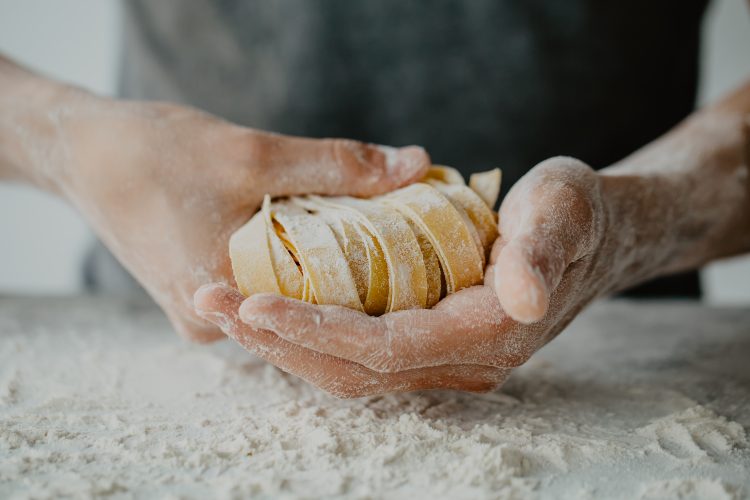Scientists extend the shelf life of pasta by 30 days
- Like
- Digg
- Del
- Tumblr
- VKontakte
- Buffer
- Love This
- Odnoklassniki
- Meneame
- Blogger
- Amazon
- Yahoo Mail
- Gmail
- AOL
- Newsvine
- HackerNews
- Evernote
- MySpace
- Mail.ru
- Viadeo
- Line
- Comments
- Yummly
- SMS
- Viber
- Telegram
- Subscribe
- Skype
- Facebook Messenger
- Kakao
- LiveJournal
- Yammer
- Edgar
- Fintel
- Mix
- Instapaper
- Copy Link
Posted: 3 November 2022 | Grace Galler | No comments yet
Italian research has discovered a new recipe that can extend the shelf life of fresh pasta by 30 days through packaging changes and ingredient additions.


Research has revealed that the shelf life of fresh pasta can be extended by 30 days via making changes to packaging, adding bioprotective, and using an antimicrobial bacteria called probiotics.
Pasta is a staple food of Italian cuisine but it’s popularity spans further than just one country. The revenue generated by European pasta sales amounted to $19.14 billion in 2022, however, its popularity is forecasted to grow annually by 9.28 percent.
With the popularity of pasta projected to increase, Italian researchers have published their novel recipe for long-lasting fresh pasta in the journal Frontiers in Microbiology.
Fresh pasta limitations
Usually, fresh pasta is produced through industrial processes that involve heat-treating the product. It is then typically stored in modified atmosphere packaging (MAP), meaning that oxygen is removed and replaced with other gasses.
Typically, when stored correctly, fresh pasta has a shelf life of between 30 and 90 days, but this can be shortened if the quality of the pasta is compromised. The quality of fresh pasta can be impacted when bacteria survives thermal treatment and is able to grow in a moist environment.
Although there are existing chemical preservatives that can be used to retain the freshness of pasta, some consumers may favour natural, ‘clean label’ alternatives.
The science behind the recipe
Italian researchers, including members of the National Research Council (CNR) and the University of Bari Aldo Moro have collaborated with Food Safety Lab to develop a novel ‘clean label’ method that they claim minimises spoilage problems in the fresh pasta making process.
The method involves changing the ratio of MAP gasses and combination of plastic films used in the packaging to control microbial growth and impermeability. The researchers also added a multi-strain probiotic mixture to inhibit the growth of bacteria.
To test the method, the scientists used a short, thin twisted pasta type called trofie. One set of fresh pasta was manufactured and packaged conventionally, whilst a second set was manufactured traditionally but stored in the experimental MAP. The scientists then added the bioprotective probiotic strains to a third set of fresh trofie, which was then stored in the experimental packaging.
The results of the experiment revealed that, after a few months, the trofie pasta treated with antimicrobial bioprotective probiotics in the experimental MAP had the best shelf life of the three experiments.
Speaking on the experiment findings, Dr Francesca De Leo, a Researcher for the Institute of Biomembrane, Bioenergetics and Molecular Biotechnologies at the CNR explained: “The results demonstrate that the MAP, together with a spray-dried probiotic bioprotective cultures, acted in a synergistic way to control the microbial spoilage of fresh pasta during refrigerated storage.”
Fresh pasta to fight food waste
The findings of the experiment revealed that fresh pasta could be stored with an extended shelf-life of 30 days compared to conventional products.
“From the consumer’s standpoint, a definite advantage of this product is the long shelf life and ease of storage,” said Dr Leo.
“This can be particularly important considering that consumers tend more and more to reduce the frequency of their food purchases, and consequently store as much as possible at home.”
However, according to Dr Leo, the benefits of this research do not stop there as she suggests that this discovery could aid with “food waste prevention” but only if “companies are willing to accept the challenge and innovate” using technological solutions.
Related topics
Clean Label, Food Waste, Ingredients, New product development (NPD), Processing, Product Development, Research & development, Shelf life, The consumer
Related organisations
Food Safety Lab, National Research Council (CNR), University of Bari Aldo Moro









